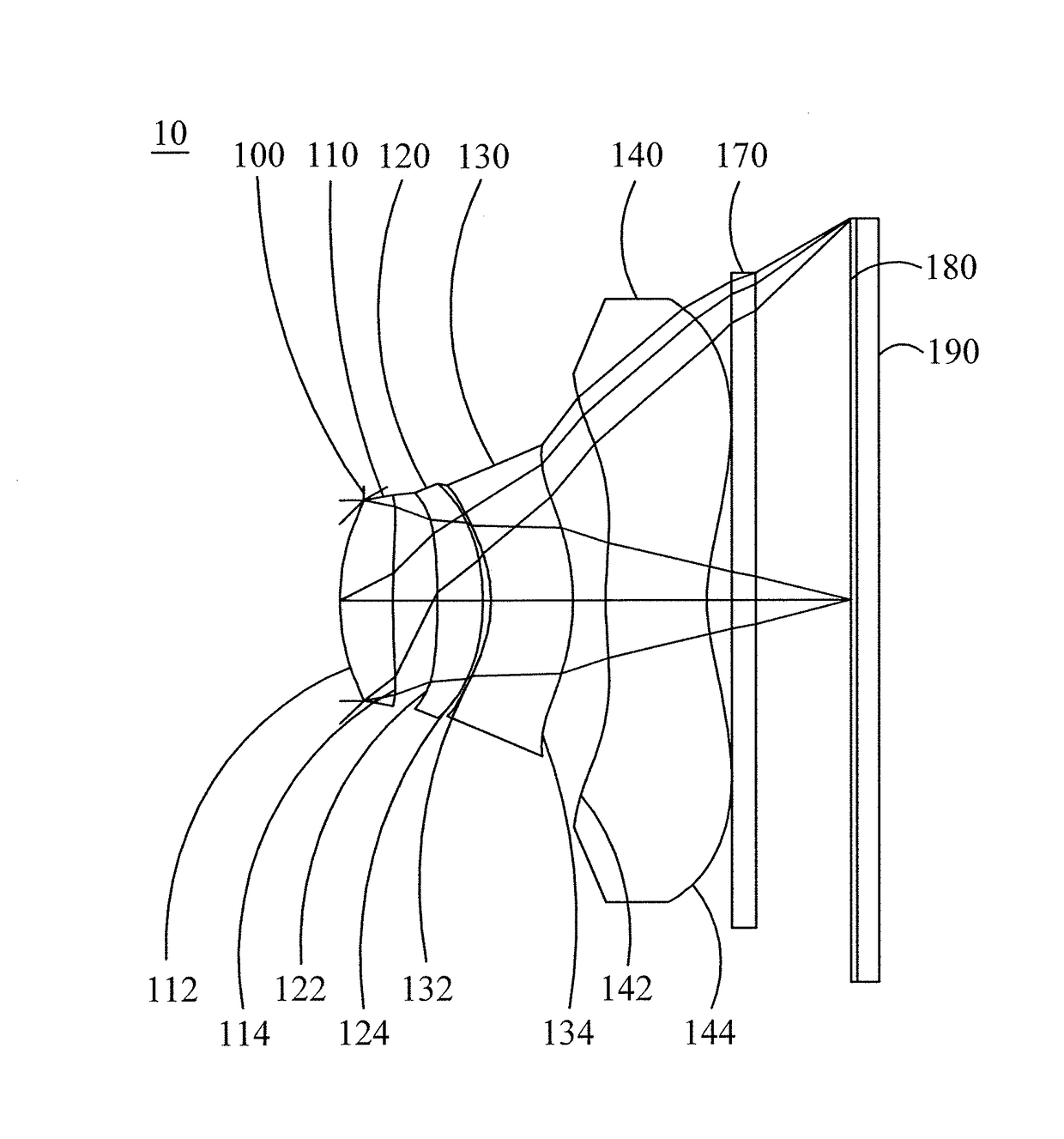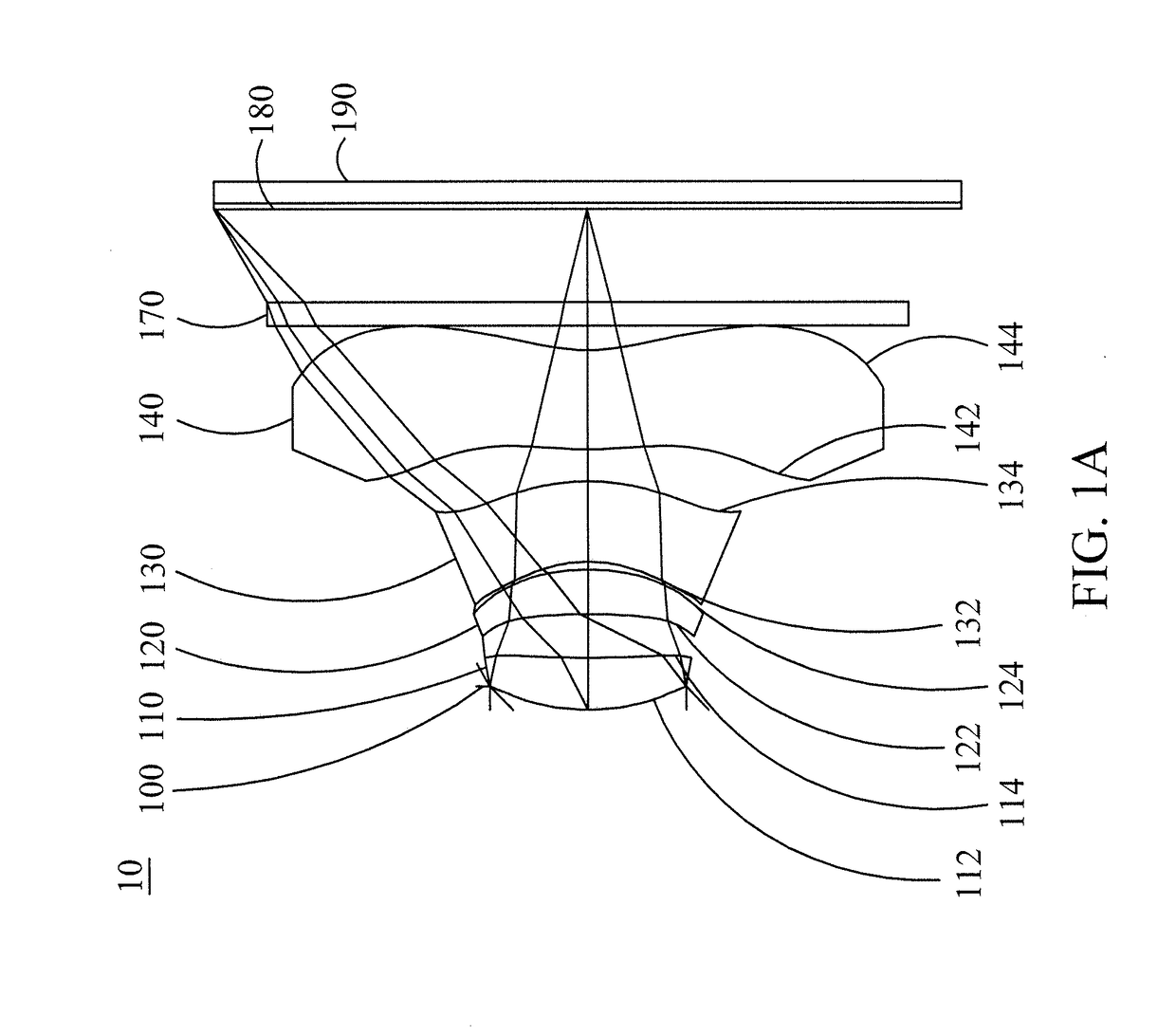Optical Image Capturing System
a technology of optical image and capturing system, which is applied in the field of compact, can solve the problems of deterioration of quality in peripheral image formation, difficulty in manufacturing, and distortion rate in image formation, and achieve the effects of reducing the height of the optical system, reducing the back focal distance of the optical image capturing system, and good imaging quality
- Summary
- Abstract
- Description
- Claims
- Application Information
AI Technical Summary
Benefits of technology
Problems solved by technology
Method used
Image
Examples
first embodiment
The First Embodiment
[0092]Please refer to FIG. 1A to FIG. 1C. FIG. 1A is a schematic view of the optical image capturing system according to the first embodiment of the present invention. FIG. 1B shows the longitudinal spherical aberration curves, astigmatic field curves, and an optical distortion grid of the optical image capturing system in the order from left to right according to the first embodiment of the present invention. FIG. 1C is a transverse aberration diagram of the longest operation wavelength and the shortest operation wavelength for tangential fan and sagittal fan, wherein the longest operation wavelength and the shortest operation wavelength pass through an edge of the entrance pupil and incident at the position of 0.7 HOI on the image plane, according to the first embodiment of the present invention. As shown in FIG. 1A, in the order from an object side to an image side, the optical image capturing system includes an aperture stop 100, a first lens element 110, a s...
second embodiment
[0134]Please refer to FIG. 2A, FIG. 2B and FIG. 2C. FIG. 2A is a schematic view of the optical image capturing system according to the second embodiment of the present invention. FIG. 2B shows the longitudinal spherical aberration curves, astigmatic field curves, and an optical distortion grid of the optical image capturing system of the second embodiment, in the order from left to right. FIG. 2C is a transverse aberration diagram of the longest operation wavelength and the shortest operation wavelength for tangential fan and sagittal fan, wherein the longest operation wavelength and the shortest operation wavelength pass through an edge of the aperture stop and incident at the position of 0.7 HOI on the image plane, according to optical image capturing system of the second embodiment. As shown in FIG. 2A, in the order from an object side to an image side, the optical image capturing system includes a first lens element 210, an aperture stop 200, a second lens element 220, a third l...
third embodiment
[0145]Please refer to FIG. 3A to FIG. 3C. FIG. 3A is a schematic view of the optical image capturing system according to the third embodiment of the present invention. FIG. 3B shows the longitudinal spherical aberration curves, astigmatic field curves, and an optical distortion grid of the optical image capturing system, in the order from left to right, according to the third embodiment of the present invention. FIG. 3C is a transverse aberration diagram of the longest operation wavelength and the shortest operation wavelength for tangential fan and sagittal fan, wherein the longest operation wavelength and the shortest operation wavelength pass through an edge of the aperture stop and incident at the position of 0.7 HOI on the image plane, according to the third embodiment of the present invention. As shown in FIG. 3A, in the order from an object side to an image side, the optical image capturing system includes a first lens element 310, an aperture stop 300, a second lens element ...
PUM
 Login to View More
Login to View More Abstract
Description
Claims
Application Information
 Login to View More
Login to View More - R&D
- Intellectual Property
- Life Sciences
- Materials
- Tech Scout
- Unparalleled Data Quality
- Higher Quality Content
- 60% Fewer Hallucinations
Browse by: Latest US Patents, China's latest patents, Technical Efficacy Thesaurus, Application Domain, Technology Topic, Popular Technical Reports.
© 2025 PatSnap. All rights reserved.Legal|Privacy policy|Modern Slavery Act Transparency Statement|Sitemap|About US| Contact US: help@patsnap.com



